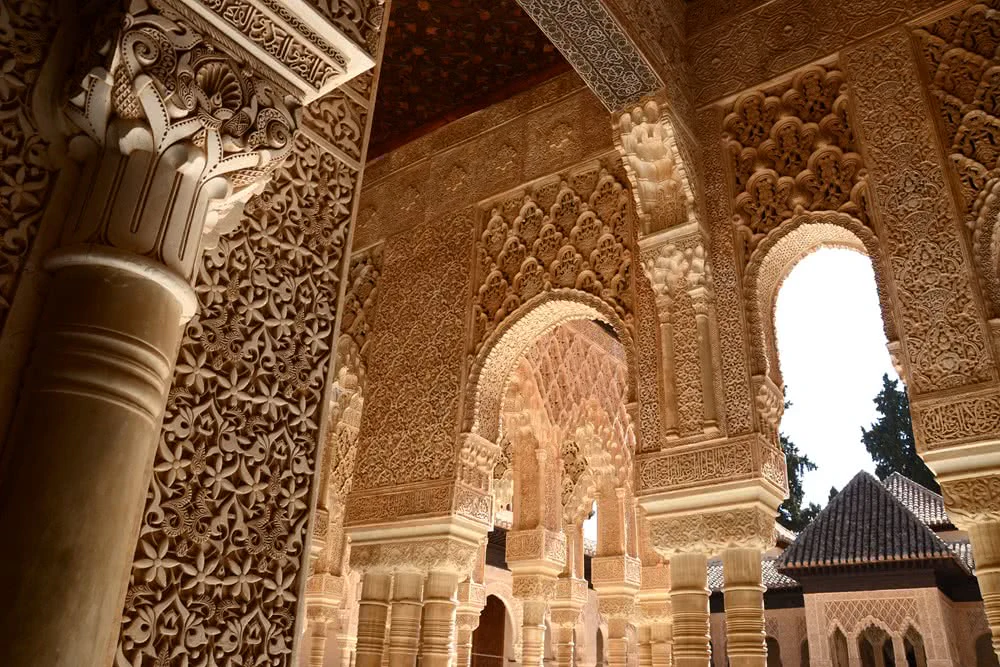Palace of the Lions
When Mohammed V succeeded his father Yusuf I, he did more than just finishing the alterations that his father had started. He actually started building what would become his great work of art, the marvellous legacy he left us in the Alhambra: the Palace of the Lions (Palacio de los Leones). This palace comprised the private chambers of the royal family and it was built in the angle formed by the Baths (Baños) and the Court of the Myrtles (Patio de los Arrayanes).
In this palace is where Nasrid art achieved its greatest degree of magnificence. The beauty of this palace shows incomparable sensibility and harmony. Light, water, colours and exquisite decoration turn this palace into a marvellous pleasure for the senses. The abstract and geometric decoration steps back in this palace for a more naturalistic style to dominate, as the result of the Christian influence, which was even stronger due to the friendship between Mohammed V and the Christian king Pedro I, the Cruel One.
The palace comprises a central patio surrounded by several galleries with columns in the way a Christian cloister would be. From the central patio you may access the different halls: the Hall of the Mocarabes (Sala de los Mocárabes) to the west, the Hall of the Kings (Sala de los Reyes) to the east, the Hall of the Two Sisters (Sala de Dos Hermanas), the Hall of the Ajimeces (Sala de los Ajimeces) and Daraxa's Mirador (Mirador de Daraxa) to the north and the Hall of the Abencerrajes (Sala de los Abencerrajes) and the Harem (Harén) to the south.
Read more about...



